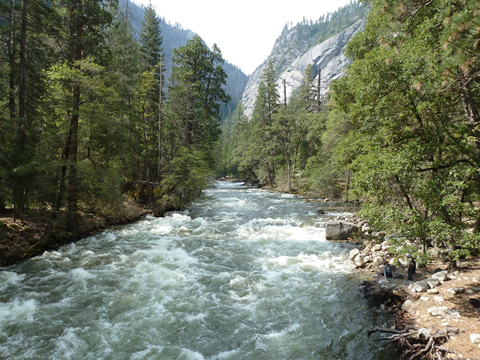Last week WMI held it’s annual staff meeting in Lander, Wyoming. One of our guest speakers, Stuart Harris MD, is the Director of the Wilderness Medicine Fellowship at Harvard and a high altitude researcher. He talked about hypoxia as a fundamental problem in medicine and how altitude illness allows us to focus on hypoxia in generally healthy subjects, and gain insights that would be obscured in patients with chronic lung and heart disease.
This brought to mind thoughts on the value of wilderness medicine research in the face of the massive health problems of heart disease, cancer, diabetes, malaria and diarrhea in the third world. Does this work benefit only a small group of healthy and wealthy people able to recreate in the wild, or does it have broader implications?
Researching venoms seems silly, especially in North America where snake envenomations are really at the bottom of the lists of things that kill us. Yet researchers studying the incredibly toxic venom of the stonefish have learned of proteins in the venom which open up pores in the cell walls, allowing the toxic venom component to enter the cell. This has sparked investigation into whether we can piggyback therapeutic medicines onto these proteins, and, using chemotherapy as an example, achieve the desired effect with less medicine, and less side effects.
A new diabetes drug is a synthetic version of a peptide found in the saliva of the Gila monster, a poisonous lizard that lives in the Southwest and Mexico. Hypothermia is applied therapeutically to survivors of cardiac arrest, and cooling systems for athletes may prove useful treatments in urban heat waves.
Wilderness medicine research also highlights conservation. The loss of forests and coral reefs reduces a source of medications. Compounds from the oceans are now being tested as treatments for chronic pain, asthma and various malignancies, including *** cancer. Medicinal botany has produced more than 100 important drugs, including aspirin (willow bark), digitalis (from foxglove), morphine (opium poppies) and the anti-malarial drug quinine (the bark of the cinchona tree).
There are many other examples, from work on pulmonary artery hypertension, a component of high altitude pulmonary edema, to reperfusion injuries, a component of frostbite, of the link between the application of science from wilderness research to non-wilderness health care. If you’re interested in more on this subject, look into Dr. Charles Houston’s ‘Going Higher’. It has an excellent and readable chapter on what we can learn about important healthcare issues in the non-wilderness world by studying hypoxia and altitude illness.
Take care
Tod


